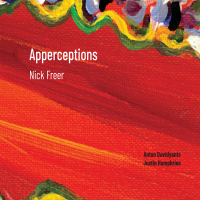Home » Jazz Musicians » Dan Andersen
Dan Andersen
Dan Andersen is an Austin, Texas based guitarist who performs with the Temple Jazz Orchestra. Some of the Austin venues which he has worked include The Elephant Room, Brass House, One-2-One Bar, and Central Market North. Additionally, he has performed at the Brownsville Latin Jazz Festival, and Houston’s premier jazz club, Cezanne. As a leader, he recorded the album The Spark and appears as co-leader with trombonist Marco Katz on the EP entitled In New Orleans, the 2022 Composer’s Collective’s The Heights Life, and as a side musician on Julia LaShae’s album Introducing… which was voted the #3 album of 2003 in New Orleans by the Times-Picayune. As part of the New Orleans music scene he performed at the city’s premier jazz club Snug Harbor as well as The Bombay Club, The Spotted Cat Music Club, The Blue Nile , Dos Jefes Uptown Cigar Bar, and Rock ‘n’ Bowl. On the festival circuit, Dan appeared in Northern California at Center Arts, Bebop and Brew, and the Redwood Coast Jazz Festival. In 1995 his quintet was the featured musical performance at the Dell’ Arte International Mad River Festival. He holds a doctorate in studio/jazz guitar from the University of Southern California Thornton School Of Music and teaches electric guitar at Temple College and Texas A&M Central Texas.
Awards
Outstanding Guitarist -1997 Pacific Coast Collegiate Jazz Festival
Gear
Ibanez, Epiphone, Godin, G&L, Music Man, Reverend
Rivera, Fender, Carvin, and Gallien Krueger amps
Roland, George L's, Xotic, Fulltone,TC Electronic, DigiTech, MXR, Goodrich, Boss, Dunlap
Tags
Take Five With Dan Andersen

by AAJ Staff
Meet Dan Andersen: Dan Andersen is a jazz guitarist and composer based in Los Angeles who earned a doctorate from the University Of Southern California Thornton School Of Music. The Spark, his debut CD, features pianist Alan Pasqua, bassist Ryan McGillicuddy, and drummer James Alsanders.In 1999, Dan left his home town of Blue Lake, California, and began working as guitarist in show bands on board various cruise ships. In 2001 he relocated to ...
Continue ReadingDan Andersen's CD "The Spark" Available Now!

Source:
Daniel Andersen
The Spark is the exciting debut CD from jazz guitarist and composer Dan Andersen. This highly interactive quartet features the artistry of pianist Alan Pasqua, bassist Ryan McGillicuddy, and drummer James Alsanders. Together they explore striking original compositions as well the works of Billy Stayhorn and Bill Evans. You can purchase The Spark directly form danandersen.com or CD Baby.
Dan Andersen Article Published in Revista Electrónica de LEEME—Journal of Music in Education
Dan Andersen's article, Jazz Guitar Improvisation: ...
read more
On the Marco Katz & Dan Andersen EP In New Orleans: “Here are four musicians who breathe the soul of American jazz. That the recording took place in New Orleans was appropriate as this is the place where the music was incubated, and here is its latest incarnation. That is not to say that it in any way copies the traditional styling of the original era except to the extent that the DNA of that period is still in the ears of these four. Your half hour will be well spent and repeated over and over!” Mordechai Cohen Jazz Artist, New York City
Primary Instrument
Guitar, electric
Location
Austin
Willing to teach
Beginner to advanced
Credentials/Background
Adjunct Professor at Temple College and Texas A&M University Central Texas
Doctorate in Studio/Jazz Guitar: University of
Southern California
Instructor of Electric Guitar, Temple College
Master of Music in Jazz Studies: University of New Orleans
Bachelor of Arts in Music Education: Humboldt State
University
All Levels
Clinic/Workshop Information
Jazz Guitar Improvisation: Beginning with Guide-Tones
This clinic is based of the principles discussed in the
December 2010 article: Jazz Guitar Improvisation:
Beginning with Guide-Tones published in Revista
Electrónica de LEEME - Journal of Music in Education
Download the article as a PDF at: https://leemejournal.com/article-detail/?id=3
Joe Lovano
drumsPat Martino
guitarJohn Scofield
guitarJohn Stowell
guitar, electricBill Frisell
guitar, electricJim Hall
guitarWes Montgomery
guitarPaul Motian
drumsCharlie Parker
saxophone, altoJoe Pass
guitarPhotos
Music
Recordings: As Leader | As Sideperson
The Spark
From: The SparkBy Dan Andersen
























